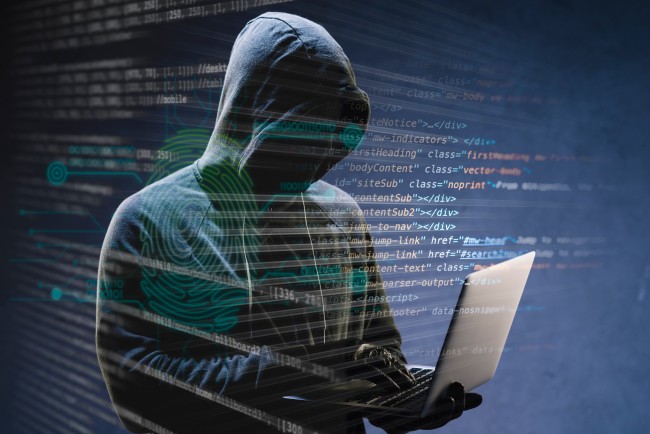
Ransomware is a global issue that is only becoming more pressing with time. These past 12 months have shown increased activity across all sectors of cybercrime, with ransomware trending upwards.
This year marked the first year with more than 4,000 ransomware victims posted on leak sites, eclipsing the 2022 figure of only 2,670. These figures don’t even take into account the huge market for business-oriented ransomware, which is sweeping across the globe.
One of the driving factors of the increasing number of ransomware attacks has been in response to the implementation of AI.
Artificial intelligence allows malicious actors to produce new ransomware threats more quickly, increasing the number they can create and disseminate at any one time.
Yet, despite the rising threat, many businesses are still unaware of how dangerous the next few years will be for cyber security.
Currently, 46% of all SMBs and enterprises do not feel more at risk of cyber threats despite the rising number of cases recorded every single year. Unfortunately, with the way things are going, it’s not a case of if a company will be attacked, it’s a case of when.
How Has Ransomware Become More Serious Over the Last Decade?
Ransomware is continuously evolving and turning itself into a more prominent threat. At present, ransomware is considered by the United Nations to be the number one malware threat that currently impacts both businesses and individuals.
As ransomware encrypts a company’s files and prevents them from accessing any company-related documents, it can quickly become a disaster situation in which businesses have little choice but to pay the fine.
Ransomware is one of the forms of cybercrime which has the most economic impact. To unlock or disable ransomware once it impacts a company, there is normally a fixed price that they have to pay.
This price is continuously increasing, with the total cost of cybercrime worldwide costing upwards of 7 trillion dollars each year. While that includes all forms of cybercrime, ransomware continuously is a major part of this impact.
Yet, a decade ago, ransomware wasn’t nearly as prominent or effective as it is currently. The process of developing ransomware would take much longer, and the final product wasn’t nearly as comprehensive. Equally, ransomware strategies are now much more devious in the modern day.
For example, even for companies that do pay the ransomware fine, that may not be the end of the story. A group of malicious actors may take the payment and then include that company on a list of potential groups for future attacks.
With that in mind, companies typically don’t know how to proceed with ransomware threats, which can create even more problems down the line.
Leading Strategies to Prevent and Prepare for the Ransomware Threat
While the threat is indeed becoming more serious, the good news is that there are now numerous ways of creating effective ransomware protection in a business setting. What’s more, not all of them rely on implementing costly software or conducting expensive cyber security team remodeling.
On the contrary, the majority of the best methods of improving ransomware defenses are very cost-effective. Here are some of our leading strategies you can implement:
- Train Your Employees – Without a doubt, one of the most effective ways that businesses can improve their chances of defending against cybercrime over the coming years is to focus on education. Nearly 90% of all cyber events are the direct cause of human error. Focusing on training employees to spot the common ways that ransomware is delivered to a company will help to create a more effective front line of defense.
- Use Zero Trust Mechanisms – Zero trust architecture is an approach to cybersecurity that ensures that employees have to validate their identities before accessing any resources. Identity access management programs will help cybersecurity teams to more effectively track who can access what files and zone resources. If one employee fell prey to a cyber attack, this would ensure that the attacker doesn’t have access to the entire system. IAMs are vital in the modern age.
- Backup Frequently – One of the most effective ways of reducing the impact of ransomware events is to ensure that your company has a range of backups to fall back on. Without a backup, you are completely vulnerable to a malicious actor freezing your company. With backups, you can continue as normal while privately dealing with the threat.
- Use Antivirus Software and Firewalls – Both of these technologies will provide additional layers of defense that your employees can make use of without even knowing it. This approach also extends to email security software, which will reduce the number of malicious files that end up in your employees’ inboxes. Where possible, seek the best ransomware protection software.
There is no single method that will completely eradicate the ransomware threat from your business. However, by implementing lots of different strategies at once, you can start to build up a more effective level of defense against any threat that may arise.
Final Thoughts
The ransomware threat is mounting, whether businesses are prepared or not. For companies that want to prevent the worst from happening in 2024, now is the time to act.
By developing effective cybersecurity prevention strategies, employing new technologies, and training employees to prepare for the threat, businesses will be more prepared across the year.
While ransomware is not the leading threat, it does represent a huge economic impact on businesses every single year. Alongside preparing for ransomware, the strategies outlined in this list will allow companies to better prepare for all threats, including phishing, malware, and other forms of cybercrime.
Incorporating Next-Gen Authentication into these strategies is crucial, as it leverages advanced technologies like biometrics and AI, adding a robust layer of security that adapts to evolving threats, significantly enhancing a company’s defense against unauthorized access and cyber-attacks.
Right now is the best time to act in terms of becoming ready for future cybersecurity events.
